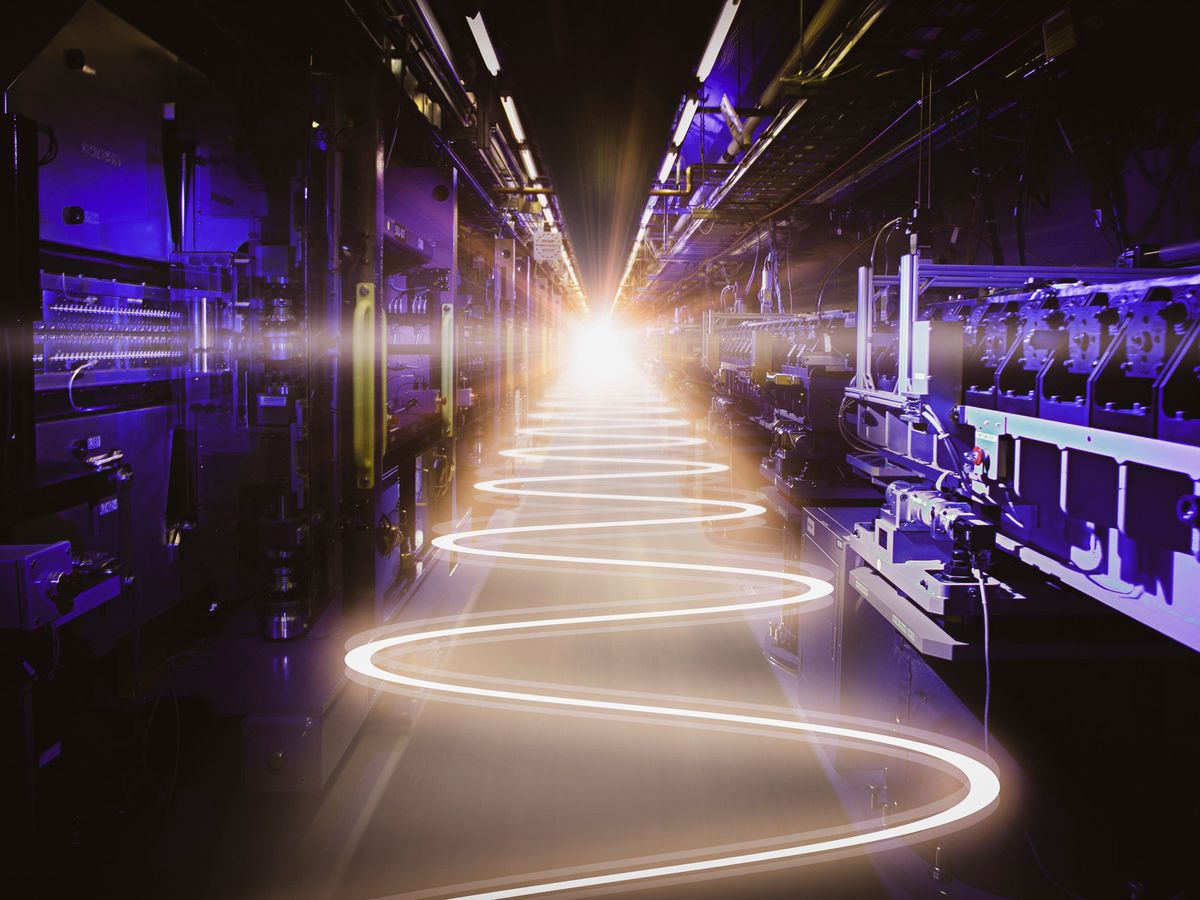In the hills above San Francisco Bay, scientists are firing up the world’s most powerful X-ray laser.
The laser is the Linac Coherent Light Source (LCLS), shooting through a former particle accelerator tunnel. LCLS itself is more than a decade old, and plenty of scientists have utilized its power to study proteins and make better materials. But LCLS’s stewards at SLAC National Accelerator Laboratory in Menlo Park, Calif., have now placed the finishing touches on an upgrade that they call LCLS-II.
Building LCLS-II involved the better part of a decade, US $1.1 billion, and giving that old particle accelerator’s cocoon a new lease on life.
That linear collider, first built in the 1960s, was once SLAC’s reason for existing. Over the decades, research conducted at the collider resulted in four Nobel prizes, but by the end of the century, it had become an aging relic that couldn’t compete with newer, shinier, circular colliders at labs like Fermilab and CERN. Its stewards started thinking about new purposes.
“Somebody came up with this idea that says, if you can tune the beam to be really precise, and then put it through this series of magnets—if you could make that work, you could have a truly transformational X-ray tool,” says Mike Dunne, an associate lab director at SLAC.
LCLS is a X-ray free-electron laser. Unlike a typical laser, which amplifies light by exciting a certain material’s atoms (such as glass or crystal), a free-electron laser instead produces light by forcing bunches of high-energy electrons through a gauntlet of alternating magnets. As the electrons wiggle to and fro, they emit photons. To create enough photons at X-ray wavelengths needs a very long gauntlet, called an undulator.

The linear collider at SLAC meant a prebuilt tunnel, ideal for housing such a laser. SLAC converted its tunnel into an X-ray free-electron laser, even going so far as to recycle a piece of the old accelerator’s beamline to now wiggle electrons. SLAC switched on the original LCLS in 2009, four years after the Deutsches Elektronen-Synchrotron (DESY) national research center in Hamburg opened up its FLASH X-ray free-electron laser to outside researchers—the first to do so.
Because X-rays have atom-size wavelengths, they’re useful for viewing matter at its smallest scales. Other light sources like synchrotrons can certainly generate X-rays, but X-ray free-electron lasers have the advantage of creating very bright, very fast X-ray bursts, on the order of femtoseconds.
With pulses that short, observers can harness a free-electron laser to see individual atoms in motion, molecules making and breaking bonds, and even electron orbitals in excitation. One application that interests Dunne is the ability to closely study the quantum materials that go into spintronic devices, in which electron spins are manipulated for more-efficient electronics.
The original LCLS was a billion times as bright as any X-ray laser before it, and it was capable of feats like shooting molecular movies. But, according to Dunne, its crucial limiting factor was that it could shoot only around 120 pulses per second. Watching biological systems or chemical catalysts work in real time needs a much more rapid shooting frequency.
Even when LCLS was new, its stewards had already plotted ways to boost that frequency. Engineers can do that by reducing the accelerator’s energy loss with the judicious application of superconductors. In lieu of a room-temperature superconductor, the upgraded accelerator would need temperatures barely above absolute zero, necessitating a complete renovation of the tunnel.
The process of plunging LCLS into a deep freeze began in 2016. Behind the existing laser apparatus, builders cleared out another section of the old accelerator’s tunnel in order to construct a superconducting accelerator and install a chain of 37 niobium-containing cryomodules.
Keeping the cryomodules at a requisite temperature of 2 kelvin (–271°C) requires a continuous supply of liquid helium coolant, which will be provided by a pair of new cryoplants on the surface.
The upgrade also included a pair of new undulators, each one linked to a separate accelerator. The new “cold” accelerator feeds directly into one undulator, which produces roughly 1-nanometer-wavelength soft X-rays. Meanwhile, the original LCLS’s remaining “warm” accelerator now feeds into a second undulator, which elicits shorter-wavelength, higher-energy hard X-rays.
Multiple labs from around the United States and the world teamed up to provide LCLS-II’s components. Fermilab in Illinois and Jefferson Lab in Virginia, for instance, provided the superconducting accelerator. Argonne National Laboratory in New York and Lawrence Berkeley National Lab in California jointly constructed the undulators. And Germany’s DESY—which operates FLASH and its successor, Europe’s largest X-ray free-electron laser—shared technology.

The new and improved LCLS-II can fire 1 million X-ray pulses per second that are 10,000 times as bright as those produced by its predecessor. On 12 September, SLAC’s scientists decreed that the laser was performing well enough for regular scientific research.
This, according to Dunne, marked the point that LCLS-II’s science team took the device’s reins. “The user science will probably start to happen in November,” he says. “It’s pretty fast.”
- The X-Ray Tech That Reveals Chip Designs ›
- Tool Reveals Mechanism Behind High-Temperature Superconductivity ›
- Europe’s Shiny New X-Ray Laser Starts Showing Its Worth ›
- Sandpaper + Machine Learning = Better X-ray Images - IEEE Spectrum ›
- LCLS: SLAC's Upgraded X-ray Free Electron Laser Fires Attosecond Pulses - IEEE Spectrum ›
- X-Rays Image Transistors in 3D - IEEE Spectrum ›



